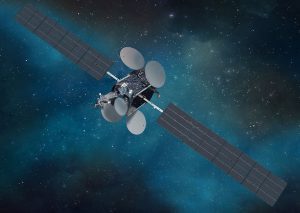Nano satellites, also known as nanosatellites, are small-scale spacecraft that have revolutionized the space industry with their versatility and cost efficiency. These compact satellites weigh between 1 and 10 kilograms and serve various purposes across diverse sectors. Their applications range from scientific research and Earth observation to communication and defense, making them indispensable tools in modern technology.

Key Applications of Nano Satellites
Nano satellites are designed to perform specific tasks efficiently. Their small size and adaptability allow them to serve in missions that larger satellites may not be able to execute as effectively.
Earth Observation and Environmental Monitoring
Nano satellites play a significant role in monitoring the Earth’s surface and environment. Their ability to collect high-resolution imagery and data makes them valuable for understanding environmental changes and managing natural resources.
Climate Monitoring: Nano satellites help track climate patterns, monitor greenhouse gas emissions, and study weather systems.
Disaster Management: Real-time data from nano satellites assist in predicting and responding to natural disasters such as hurricanes, earthquakes, and floods.
Agricultural Monitoring: These satellites provide critical insights into crop health, soil moisture levels, and vegetation cover, aiding precision agriculture.
Communication and Connectivity
Nano satellites are used to enhance global communication networks. They are deployed in constellations to provide reliable and cost-effective connectivity solutions, especially in remote areas.
Internet of Things (IoT): Nano satellites facilitate IoT connectivity by linking devices in remote locations to central networks.
Rural Communication: By bridging communication gaps in underserved regions, they contribute to digital inclusion and economic growth.
Maritime and Aviation Communication: Nano satellites support navigation and communication for ships and aircraft, ensuring seamless global operations.
Scientific Research and Technology Demonstration
Nano satellites are extensively used in scientific exploration and testing new technologies. Their compact design and lower costs make them ideal for experimental missions.
Space Research: Nano satellites are deployed to study the Earth’s magnetosphere, ionosphere, and other space phenomena.
Technology Testing: They serve as platforms for testing innovative technologies, such as advanced sensors and propulsion systems, before scaling up to larger satellites.
Educational Missions: Universities and research institutions use nano satellites for hands-on training and experimentation in space science.
National Security and Defense
Nano satellites contribute significantly to national security by providing critical surveillance and intelligence capabilities. Governments use these satellites for monitoring activities and ensuring the safety of their nations.
Surveillance: Nano satellites are equipped with advanced cameras and sensors to track potential security threats.
Reconnaissance: They provide real-time data on global events, helping defense agencies stay informed and responsive.
Space Debris Monitoring and Management
With the growing concern over space debris, nano satellites play a pivotal role in its monitoring and management. Their compact design allows them to navigate congested orbits while collecting valuable data on debris movement.
Collision Avoidance: Nano satellites help predict and prevent potential collisions between space objects.
Debris Removal: They are also being tested for active debris removal technologies, such as capturing defunct satellites and deorbiting them safely.
Advantages of Nano Satellites in Modern Applications
Nano satellites are gaining popularity due to their numerous advantages over traditional satellites. Their cost efficiency, faster development cycles, and adaptability make them ideal for a wide range of applications.
Cost Efficiency
Building and launching nano satellites is significantly cheaper than traditional satellites. This affordability makes space exploration and utilization accessible to startups, universities, and developing nations.
Rapid Deployment
Nano satellites can be designed and launched within months, compared to years for larger satellites. This rapid deployment capability allows for quick adaptation to evolving technological needs and market demands.
Scalability and Flexibility
Nano satellites are often deployed in constellations, where multiple units work together to provide comprehensive coverage. Their modular design allows for flexibility in upgrading and adding new capabilities.
Accessibility for Research and Education
Nano satellites have democratized access to space for educational and research institutions. Students and researchers can design and launch their own satellites, fostering innovation and practical learning in space science.
Future Trends in Nano Satellites Applications
The applications of nano satellites are expected to expand as technology evolves. Emerging trends include their use in artificial intelligence, advanced sensors, and deep space exploration.
Artificial Intelligence: Integrating AI into nano satellites will enable autonomous data processing and decision-making.
Deep Space Missions: Nano satellites are being considered for exploratory missions beyond Earth’s orbit, such as studying asteroids and distant planets.
Enhanced Imaging Capabilities: Advances in imaging technology will improve the resolution and accuracy of data collected by nano satellites.
Nano satellites have transformed the space industry with their versatility, efficiency, and affordability. Their diverse applications in Earth observation, communication, research, and defense demonstrate their vital role in addressing global challenges. As technology continues to advance, nano satellites will further expand their reach and capabilities, opening new frontiers in space exploration and technological innovation.
